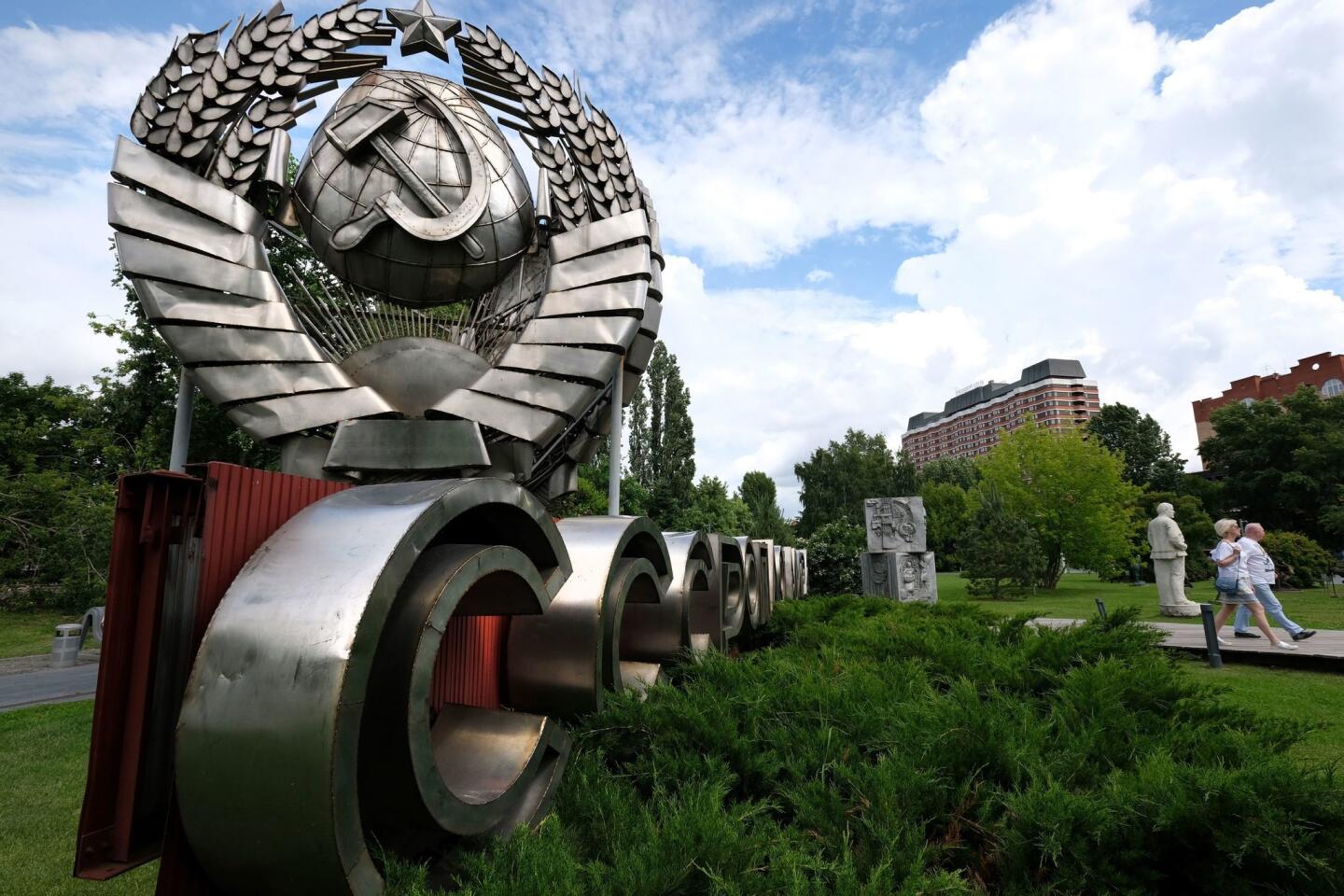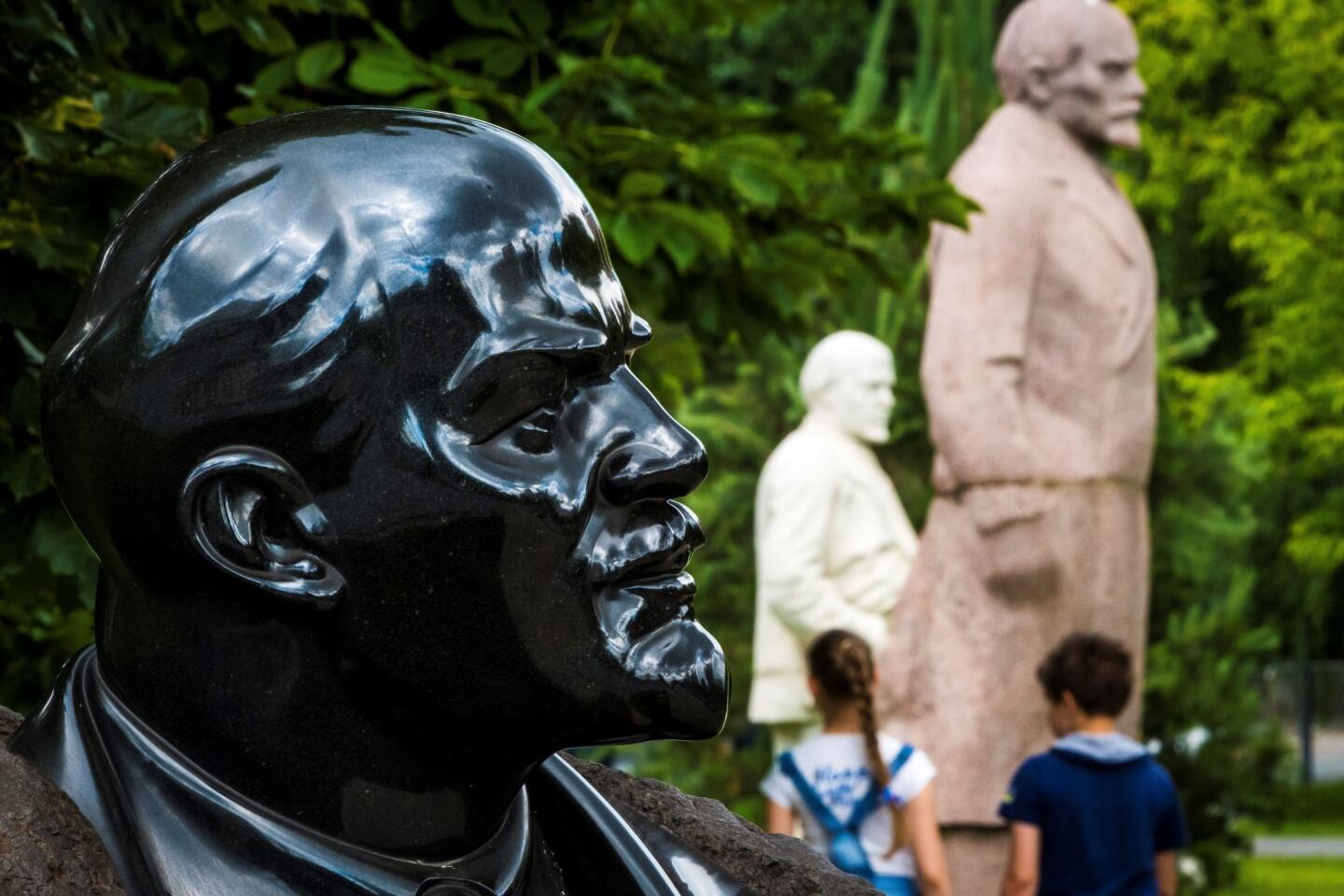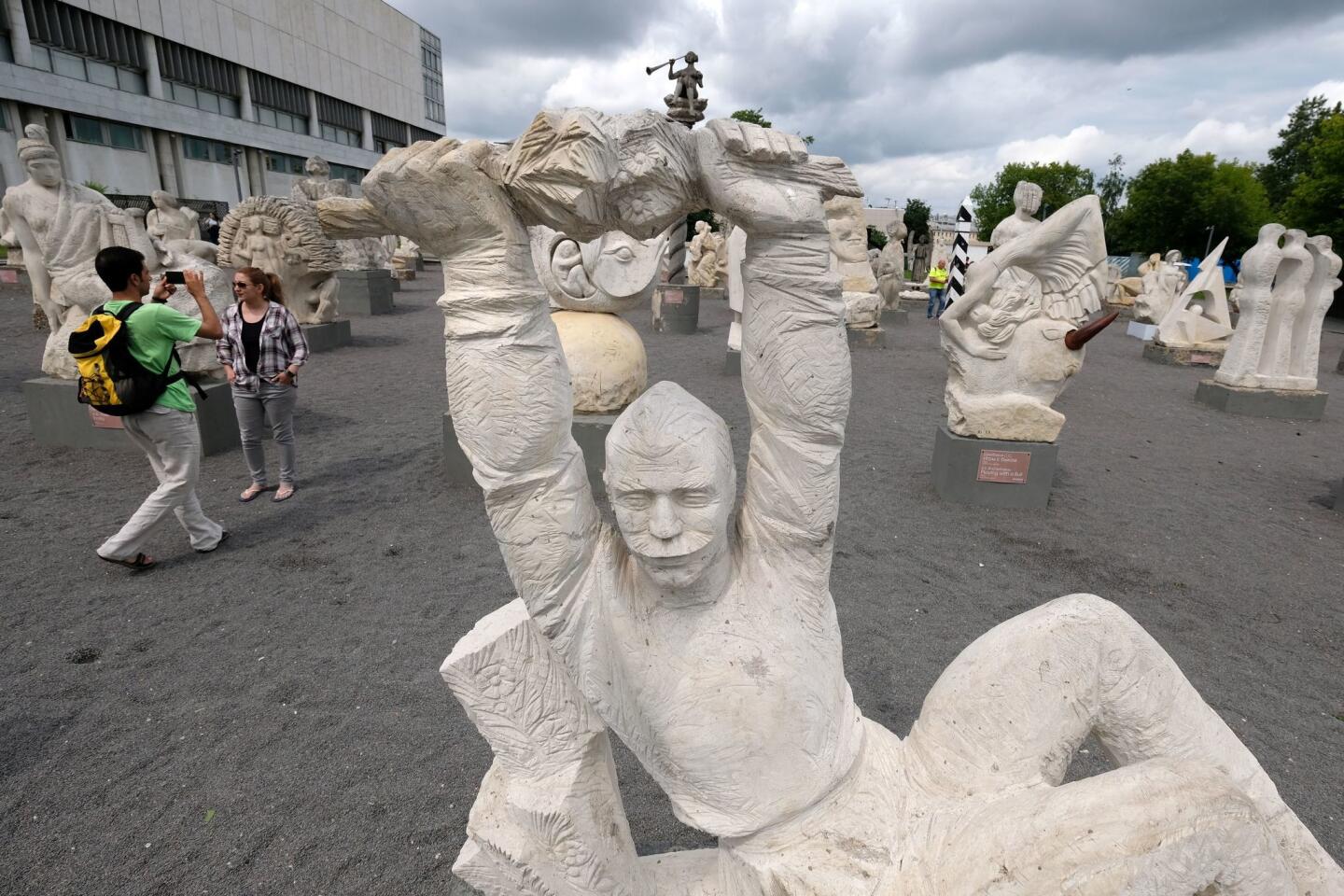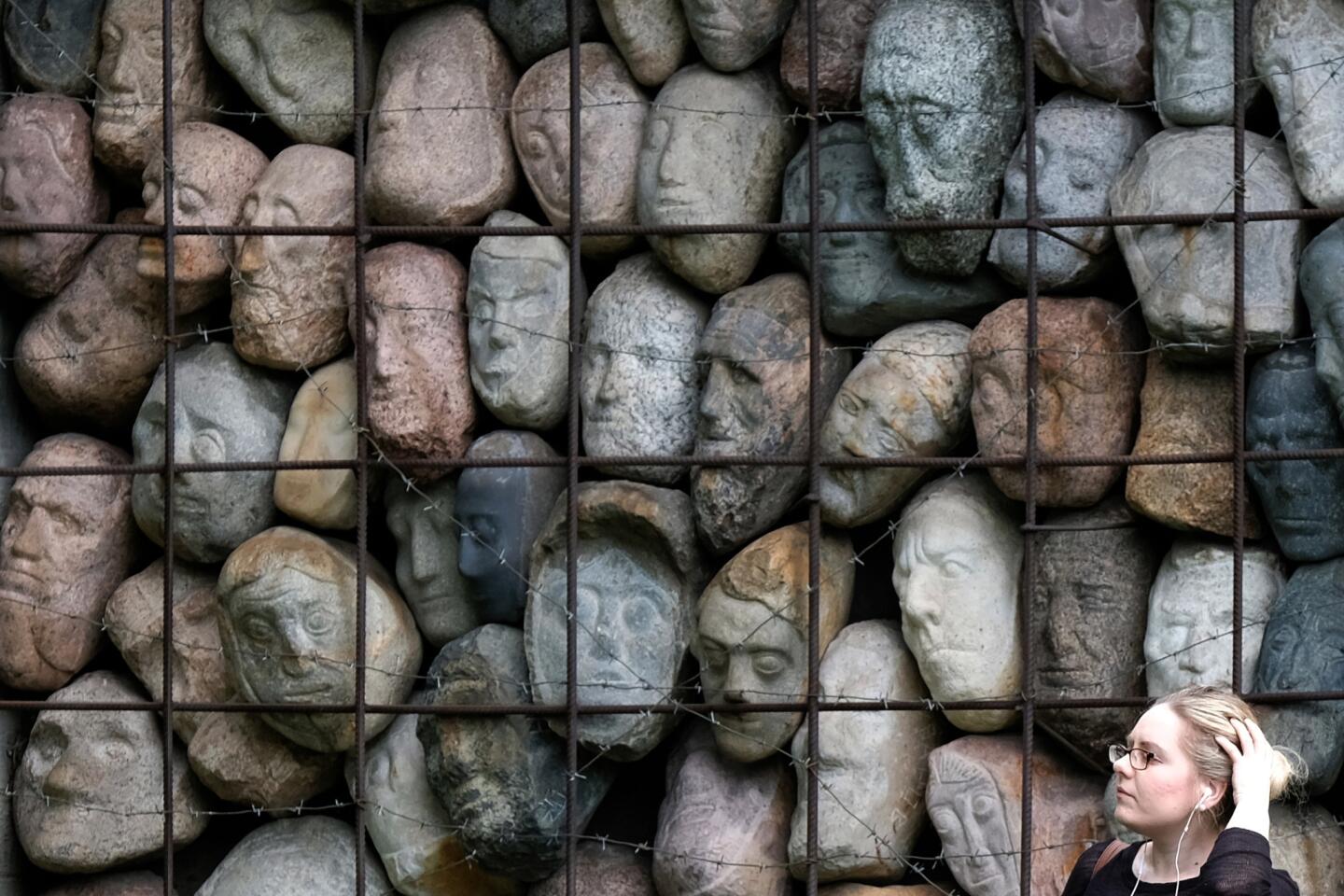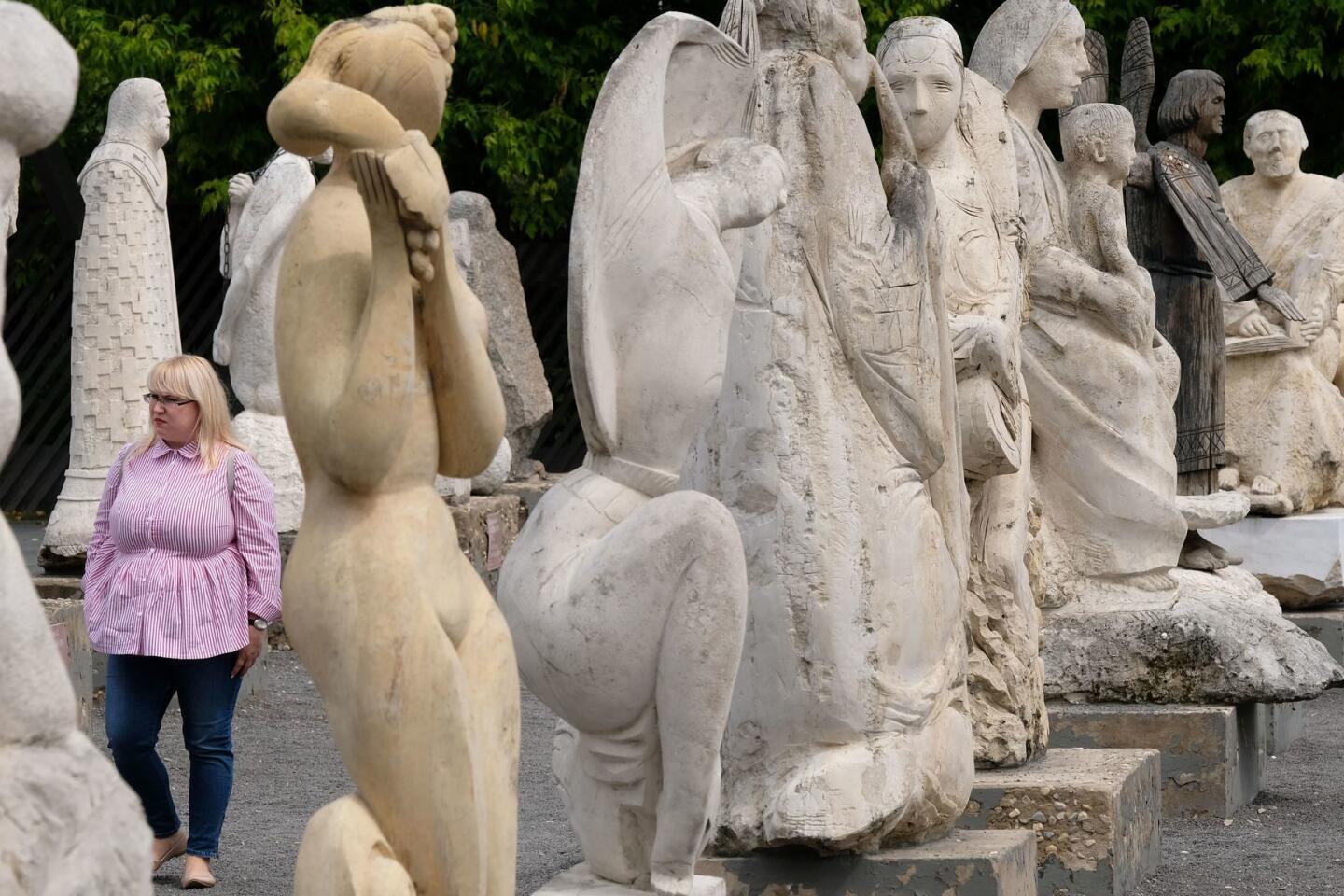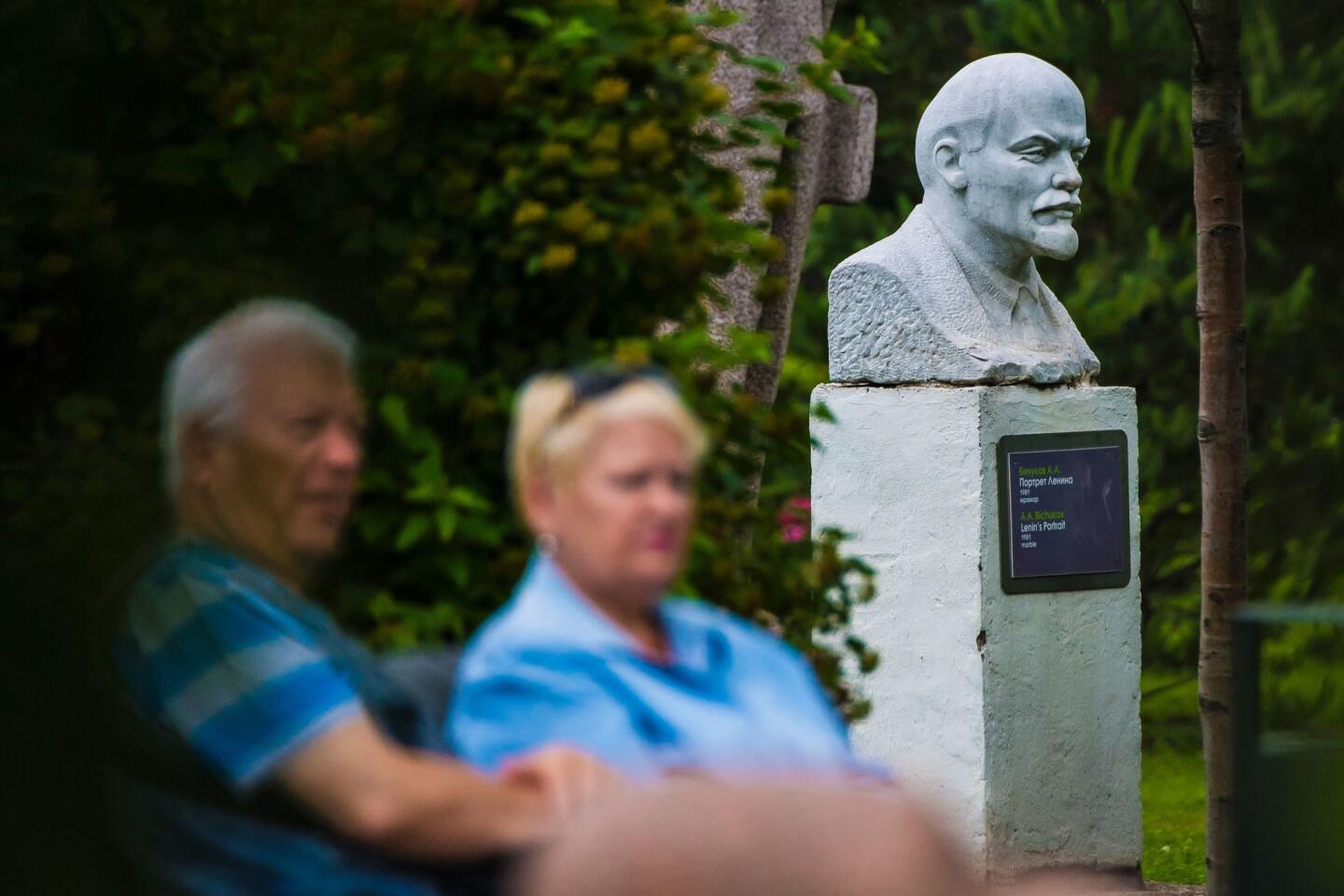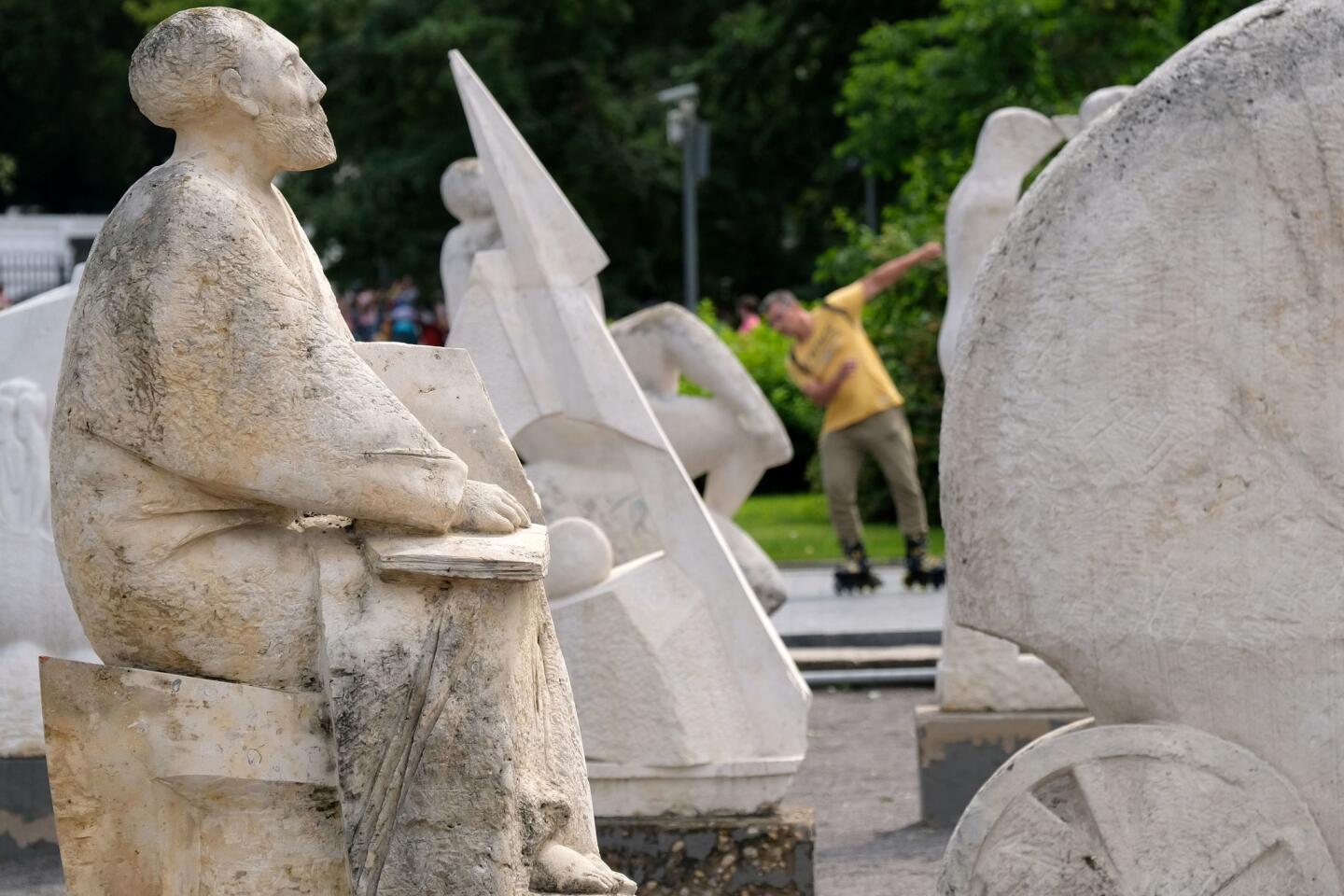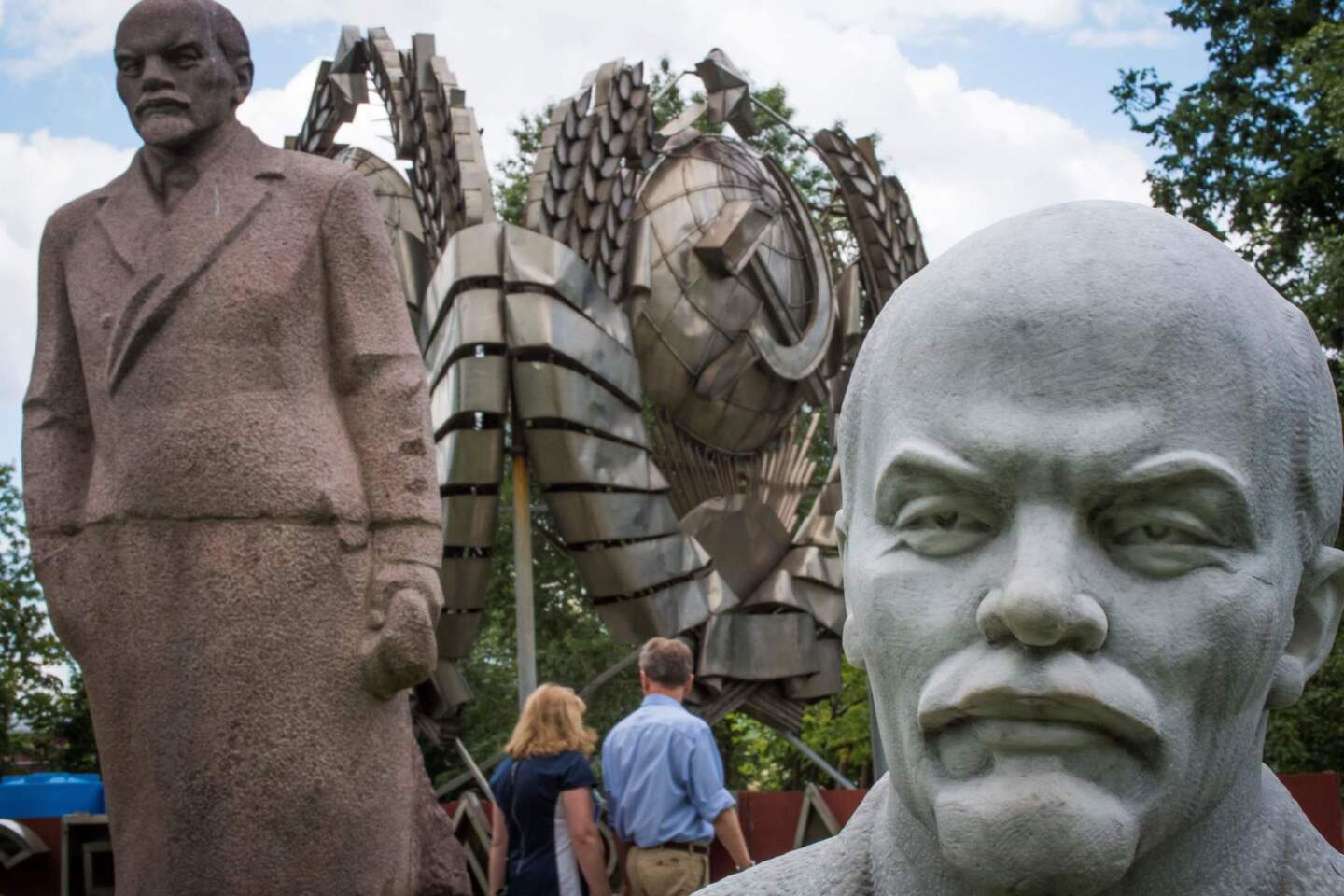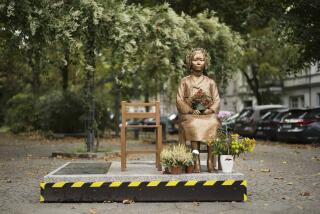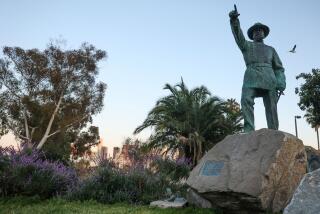Russia had its own version of the Confederate monument problem. The solution: a sculpture park in Moscow
- Share via
Reporting from Moscow — Marusya climbed the concrete platform to Josef Stalin’s feet, followed by her younger sister, Lilia. Ducking behind the former Soviet dictator’s red granite leg, Marusya initiated a game of hide-and-seek with her sister, and the two began chasing each other around the statue’s base.
“Marusya, don’t do that! Come down. Someone is going to fall!” her mother yelled from the sidewalk where she was pushing a baby carriage and chatting with another young mother. The two sisters continued to giggle as they circled the statue’s feet.
For the record:
2:25 p.m. Aug. 29, 2017An earlier version of this article said the statue known as “Iron Felix” weighed 11 tons. It is 14 tons.
The girls didn’t seem to notice that the statue of the man responsible for some of the former Soviet Union’s greatest atrocities — the Great Terror political purges of the 1930s, an engineered famine in Soviet Ukraine, and the deportation of millions to Siberia — was missing a nose. The facial feature was probably chipped off in 1991 during its transfer from its original home in front of Moscow’s famed Bolshoi Theater to this sculpture park on the Crimean embankment of the Moscow River.
After a few turns around Stalin’s boots, the children jumped down and scurried over to the next object in their climbing adventure: Yakov Sverdlov, a Soviet Communist Party leader notable for giving the order to assassinate the Russian czar and his family in 1918.
As the debate in the United States over Confederate and other historic monuments rages on, Russians have, for the time being, laid to rest their own debate about statues here in the Muzeon sculpture park.
“It’s our history! Of course they shouldn’t be thrown away in a trash bin,” said Marina Skokova, 61, a Moscow pensioner who was taking advantage of the summer’s remaining warm days to stroll through the park with her two nephews. “We shouldn’t forget our history, both the good and the bad times.”
In 1991, when the Soviet Union was breaking up and the promise of democracy was in the air, Moscow and other cities across the former U.S.S.R. rushed to change the names of streets and squares bearing Soviet-era names. Hundreds of statues of Vladimir Lenin, the leader of the Bolshevik Revolution, came down, some by force and some by a democratic vote.
You should do what we did here. You can’t try to hide from the past.
— Marina Skokova, a Moscow retiree
So did monuments to many other Soviet luminaries.
A statue of Felix Dzerzhinsky, the founder of the Soviet secret police agency that was the precursor to the KGB, once stood prominently in front of the agency’s headquarters in central Moscow, a notorious place known for detainment and torture in its basement cells.
The Moscow City Council voted in October 1991 to dismantle the Dzerzhinsky statue, which was toppled by demonstrators two months earlier, as Russia made efforts to come to terms with its totalitarian past. In 1994, the 14-ton bronze figure was moved to its current perch in the sculpture park.
“This work is historically and culturally significant, being the memorial construction of the Soviet era on the themes of politics and ideology,” the sign in front of the statue says.
Standing in the shadow of “Iron Felix,” as he was known, Skokova had advice for Americans conflicted over what to do about monuments to Confederate Gen. Robert E. Lee.
“You should do what we did here,” she said. “You can’t try to hide from the past.”
The statement likely had little meaning to the young girls, who were taking full advantage of the August sunshine in Moscow’s biggest sculpture park, home to more than 700 pieces, including modern works of art. But the park’s collection of former Soviet memorials is the big draw for tourists seeking a taste of what life looked like in communist Russia before the breakup of the Soviet Union.
When the Lenin busts and statues of Soviet leaders were dismantled and brought to this riverside park in the mid-1990s by the decree of the Moscow government, many were placed arbitrarily in the grassy field behind the modern art collection of the Tretyakov Gallery and Central House of Artists exhibition halls, a massive Soviet piece of architecture that today is host to some of Russia’s top art exhibitions.
But the Muzeon park received a substantial renovation in 2012, transforming it into one of Moscow’s most popular spots for strolling with friends or walking dogs. Hip cafes serving espresso concoctions — flat whites, iced lattes — are scattered among the park’s collection of sculptures, both Soviet and modern collections. Lovers sit on park benches overlooking the Moscow River, where cruise boats ply its waters on their way toward the red brick walls of the Kremlin.
Pingpong tables host spontaneous battles between rowdy groups of young men, while pensioners read their papers from benches lining the paved walkways. Across the park from Stalin’s stern gaze, a teenage rock band practiced on a concert stand for an evening performance, one of the last before the start of the school year on Sept. 1.
Today, the Soviet relics have been propped up and, like the Dzerzhinsky statue, given brief descriptions listing the subject, the artist and where the monuments once stood. There are no mentions of the estimated tens of millions killed by the secret police during the 70 years of Soviet rule.
To Stalin’s right shoulder there is a wooden walkway that winds about 25 feet through various sizes and shapes of Lenins and Stalins. At one end of the walkway, two shiny, black granite busts — one of Lenin and one of Karl Marx — have become popular spots for tourists to pose for the essential selfie to complete any Moscow visit.
There are still plenty of communist leaders’ busts and statues around the Russian capital and, indeed, the country. In the last year, several cities have erected or, rather, re-erected statues of Stalin as part of a resurgence of admiration for the Soviet leader in Russia.
Less than a mile away from Muzeon, Vladimir Lenin stands at October Square with his hand stretched out toward the Kremlin. It’s now a popular spot for skateboarders. The preserved remains of the Soviet leader, of course, remain on display in his mausoleum at Red Square.
Meanwhile, in neighboring Ukraine, a nationwide “de-communization” program has removed 1,320 Lenin statues across the country. Although many Ukrainians have rejoiced in the tear-down of memorials to a man who embodied Soviet domination and repression, the de-communization program has not been without its critics.
“I think it’s wrong, they shouldn’t have done it the way they did,” said Maxim Skokov, 17, who was wandering around the Soviet statues in Moscow with his aunt, Marina. The teen, who came to Moscow from central Ukraine, sees the movement there to tear down the Lenin statues as an attempt “to hide our history.”
His aunt nodded in agreement.
“If you try to forget your history, you will forget who you are and where you came from,” Skokova said. “And if you forget who you are and where you came from, it will be easy for them to just forget you!”
Twitter: @sabraayres
Ayres is a special correspondent.
ALSO
Revered Russian theater director placed under house arrest, raising fears of a crackdown on dissent
An outspoken researcher of Stalin’s crimes fights for his own fate and freedom in Russia
What? Britain’s Big Ben expected to stay (mostly) silent for at least four years
More to Read
Sign up for Essential California
The most important California stories and recommendations in your inbox every morning.
You may occasionally receive promotional content from the Los Angeles Times.

